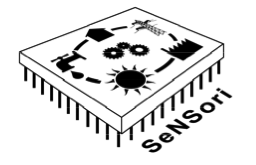Projects
The "BIGGER DATA" project intends to improve and integrate the asset of structured data made available by local authorities and by private companies, in order to sort out meaningful and useful information for the socio-economic environment, for the benefit of local communities and for an ongoing improvement of public and private services, with the view of the development of new classes of "open data".
The main data collecting system shall consist of vehicles operating in public transport (buses, taxi, etc.) adequately equipped with intelligent sensors (cameras, light sensors, etc..) and with transmission systems to collect heterogeneous geolocalized data and send them to an infrastructure able to store and aggregate them for further post-processing and presentations.
The PESCATEC Project intends to adopt a set of initiatives characterized by important aspects of technological innovation, and aims to develop a sustainable and competitive Sicilian fishery. In particular, the project proposes the development of activities aimed primarily at:
- promoting environmental sustainability by increasing the selectivity of fishing tools;
- facilitating the sustainable use of marine biological resources by helping to improve the cost / benefit ratio of the fishery;
- increasing the added value of the fishery products;
- increasing the comfort and safety on board, also in relation to fishing activities;
- improving the socio-economic sustainability of the fisheries sector through the adoption of ICT technologies on board for a rational exploitation of resources and direct access to their markets.
The quality of air is a major concern in modern cities as pollutants have been demonstrated to have significant impact on human health. Networks of fixed monitoring stations have been deployed in urban areas to provide authorities with data to define and enforce dynamically policies to reduce pollutants, for instance by issuing traffic regulation measures. However, fixed networks require careful placement of monitoring stations to be effective. Moreover changes in urban arrangement, activities, or regulations may affect considerably the monitoring model, especially when budget constraints prevent from relocating stations or adding new ones to the network. The aims of this projects is to develop a different approach to environmental monitoring through mobile monitoring devices implementing a Vehicular Sensor Network (VSN) to be deployed on the public transport bus fleet of Palermo.
SmartBuildings project addresses the issue of timely and ubiquitous monitoring of building complexes in order to optimize their energy consumption. In this project we present an intelligent system to support the typical end user, i.e. the administrator, or responsible operator, of the complex. A three-level architecture is designed for detecting the presence of the building inhabitants user and understanding their preferences with respect to the environmental conditions in order to optimize the overall energy efficiency of the buildings. Wireless Sensor and Actuator Networks (WSAN) are used to remotely monitor and control the environment according to the decisions made by a centralized reasoner.
The goal of SENSORI – SEnsor Node as a Service for hOme and buildings enerGy savIng - is to define and develop an ambient intelligence architecture that fully controls energy, electric and water flows in industrial, social and housing environments. This program aims at innovating the “home system”, a key area of Made in Italy, supporting a significant product innovation through both adding scientific and technological knowledge, and performing activities to acquire new knowledge.
The research program aims at designing and realizing a novel technological paradigm for the complete control of energy flows that is able to innovate Italian SMEs and make them competitive at an international level. This will allow an intelligent and adaptive governance of the environment state, reasoning upon it and undertake the proper actions in order to reach two counteracting goals: the users’ welfare, and the overall energy consumption.
In particular, the program will define and develop a prototypal model of intelligent sensor capable of supplying value added for the ambient intelligence through a set of compatible services, a service platform that supports the sensors network and at last a middleware for the internal network and the service platform connection.
Sensor9k is a testbed for designing and experimenting with WSN-based Ambient Intelligence applications. The name of the testbed is meant to emphasize its pervasiveness, as it ideally recalls the fictional HAL 9000 AI system, whose extremities pervaded the spaceship in "2001: A Space Odyssey". In particular, we intend to address the issue of implementing effective policies for energy saving in the context of indoor environments. The pervasive sensory infrastructure may be profitably used to gather information about the current energy usage, as well as the corresponding environmental conditions, into a centralized server, where artificial reasoning techniques may be implemented.
In this context, our testbed aims to boost the development of AmI applications, and we argue that providing an abstraction towards the physical layer by means of a composition of core services will effectively let the AmI designer focus on higher-level issues.
In this perspective, Sensor9k provides a set of ‘‘building blocks’’ that implement basic intelligent functionalities on top of the underlying distributed sensory and actuating infrastructure. Sensor9k specifically focuses on indoor environments, where relevant environmental quantities will be monitored through pervasively deployed WSNs without adversely impacting the integrity of the pre-existing structures. Sensor nodes host the software implementing the logic of the application to be tested, as defined by the AmI designer, as well as additional testbed-specific functionalities.



